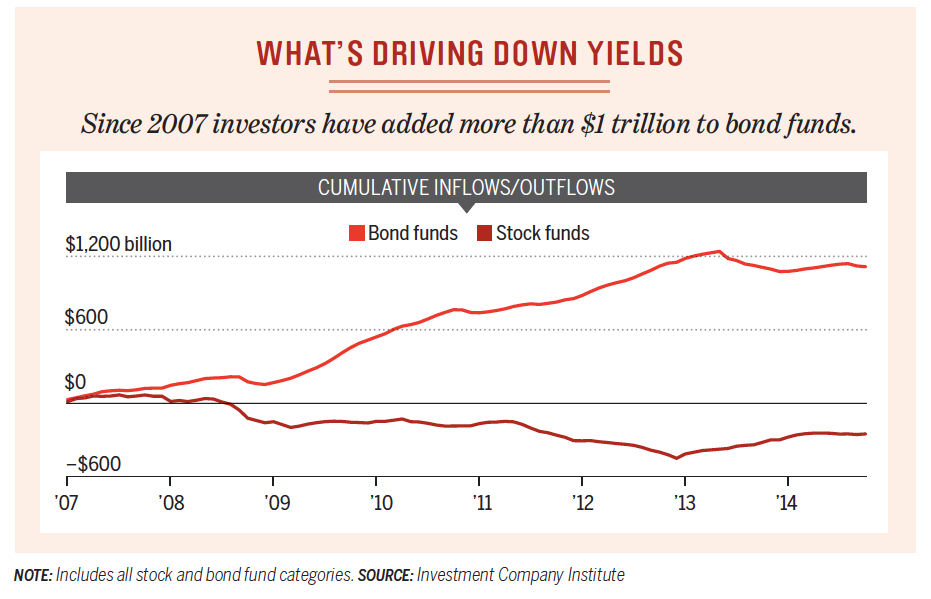Nervous investors lose out as market timing fails
Post on: 27 Июнь, 2015 No Comment

The South African collective investment schemes (CIS) industry grew its assets under management by a healthy R32-billion in the first three months of this year to R818-billion. With all double counting stripped out assets under management stood at R783-billion at the end of March this year.
Only 10 years ago, the industry had assets under management of only R124-billion. At the time the industry offered 348 funds – today investors have a choice of 913 funds.
Releasing the quarterly statistics for the local CIS industry this week, the Association for Savings and Investment South Africa (ASISA) confirmed that its new sophisticated statistics system is now fully operational, which means all incidents of double counting are being stripped out when measuring assets under management in the CIS industry.
Leon Campher, CEO of the Association for Savings and Investment South Africa (ASISA), says a degree of double counting has been present in the CIS statistics in the past, mainly caused by hybrid funds, since these funds invest in both securities and other unit trust funds. The previous system was only able to remove double counting from funds of funds.
Attracting net flows
Total gross sales for the quarter amounted to R167.4-billion, against outflows (redemptions) of R147.7-billion. This resulted in net inflows of R19.7-billion for the first quarter of this year.
Domestic money market unit trust funds attracted the bulk of these flows – investors placed a total of R11-billion into cash in the first three months of this year. Domestic asset allocation funds took R8.4-billion. Only R475-million was invested in domestic equities. Other domestic fixed interest funds suffered outflows of R2.9-billion.
Campher says this is in stark contrast to investor behaviour in the second half of last year, when asset allocation funds and equity funds beat money market funds in popularity.
Unfortunately, says Campher, these spectacular moves between the various asset classes come at a high price for investors.
The price of timing
Investors’ brief courtship last year with unit trust funds providing equity exposure ended abruptly with the dip in the markets early in February this year. But no sooner had investors sold back into money market funds, did the JSE All Share Index (ALSI) rally again, resuming its slow, yet steady climb towards regaining previous losses. In the first quarter alone the ALSI gained 4.5%, despite the brief dip.
Campher says in the past 12 months ended 31 March this year, the JSE ALSI grew by 44%. In Rand terms, compared to the SP500 and the FTSE 100, the ALSI was the best performing index.
“Unfortunately most investors wiped out their share of these gains by hopping in and out of equity exposure every time the market sighed.”
Campher says a closer look at flow patterns into the various asset classes over the past two years reveals that money market funds were the preferred investment for the first three quarters of 2008, with the equity sector having experienced consistent outflows.
“Ironically investors suddenly started acquiring equity exposure towards the end of 2008, just as the JSE All Share Index had reached a spectacular all time high. But when they realised that they were now part of one of the most horrific market meltdowns in history, they sold out of equities and moved back into money market funds.”
He says only when the JSE All Share Index had reached its low on 3 March 2009, did investors start acquiring equity exposure again, just to get spooked by the brief dip in the markets at the beginning of this year.
Campher says this means the majority of investors bought consistently when units were expensive and sold when their units had shed most of their worth. Over the long-term, he adds, this will result in their portfolios being eroded by badly timed choices and by inflation.

“The only way to maximize returns is by constructing a solid, well diversified portfolio with a trusted financial adviser and then sitting out the bad times. Investors who want to achieve inflation beating returns over the long-term must learn to maintain a steady equity exposure as part of a well diversified portfolio.”
The Domestic Equity General unit trust sector delivered a return of 16.9% per year over the five years to the end of March 2010, while money markets funds returned 8.8% over this period. Inflation (CPI) averaged 6.5%.
Over the one year period to the end of March, the Domestic Equity General unit trust sector returned 41.1%, against the 8.3% achieved by money market funds. Inflation stood at 4.3%.
Diversifying offshore
As at 31 March 2010, total assets under management in locally registered foreign funds stood at R107.5-billion, slightly down from the R108.5-billion at the end of 2009.
Campher explains that the assets under management figure for locally registered foreign funds has been declining, because a number of the funds that were no longer actively sold in South Africa have been deregistered.
The number of foreign currency denominated funds on sale in South Africa has dropped from 372 at the end of 2009 to 342 at the end of last quarter.
Foreign currency unit trust funds are denominated in currencies such as the dollar, pound, euro and yen and are offered by foreign unit trust companies. These funds can only be actively marketed to South African investors if they are registered with the Financial Services Board. Local investors wanting to invest in these funds must comply with Reserve Bank regulations and will be using their foreign capital allowance, which was increased from R2-million to R4-million per individual last year.
Campher says the foreign CIS statistics for the first quarter of this year show that 42% of assets invested by South Africans in foreign funds were allocated to equity funds. Only 6% of assets were invested in fixed interest funds.














